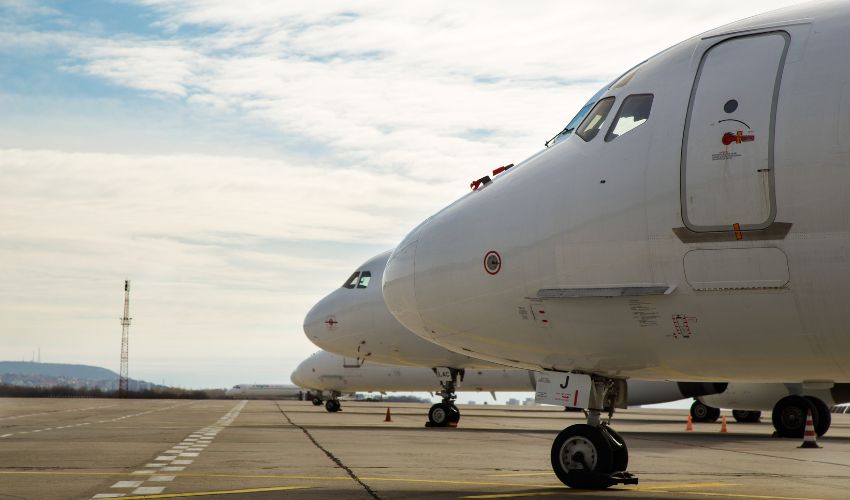In the dynamic and complex world of aviation, precision, collaboration, and smooth coordination among various stakeholders is key. These stakeholders include airlines, ground handlers, regulatory authorities, and the dedicated teams managing the airports. Amidst this complexity, one key performance indicator (KPI) stands out as a linchpin for the quality of service and passenger satisfaction – on-time performance (OTP). While this metric is often used to assess an airline´s efficiency, we will explore the importance of on-time performance for airports.
Debunking Common Perceptions
It’s important to recognize that the concept of punctuality extends beyond just the airlines. This association may be due to the fact that airlines are usually the face of air travel for passengers. Passengers book tickets with airlines, interact with airline staff and spend the most time onboard aircraft. As a result, they may directly attribute delays and punctuality issues to the airline they are flying with.
Nevertheless, industry experts, aviation enthusiasts, and those working in the field are well aware that on-time performance is a collective responsibility affecting the whole travel ecosystem. Disruptions, for instance, can result from various factors, including weather, air traffic, airport operations, and even aircraft maintenance.
Airlines are certainly one of the primary beneficiaries of a good OTP. Delays affect productivity and cost carriers thousands of dollars every year. But improved on-time performance for airports is also a crucial lever of operational excellence. Then at the end of the day, passengers, airlines, and the aviation industry at large rely on airports that have their processes under control and efficiently manage their resources to ensure flights depart and arrive on schedule.
The Meaning of On-time Performance for Airports
On-time performance, or OTP, is the yardstick that measures the proportion of flights that adhere faithfully to their scheduled departure or arrival times. In the context of airports, it’s the departure schedule that garners the most attention.
Let’s take a closer look at why OTP is so pivotal in ensuring the seamless operation of airports and the satisfaction of travelers.
1. Customer Satisfaction and Trust
For passengers, time is of the essence. Whether traveling for business or pleasure, timely flights are critical to their schedules. Studies point out that passengers are more likely to choose airlines and airports with a strong record of on-time performance.
An airport that consistently delivers on-time departures and arrivals fosters trust and satisfaction among travelers. This trust extends not only to the airport but also to the airlines operating there.
2. Economic Benefits
Efficiently managing airport resources such as check-in shelters, gates, and terminals, is a key driver of on-time performance. When an airport can optimize the use of its infrastructure, it minimizes delays, reduces costs, and maximizes capacity.
A well-managed, punctual airport is more likely to attract airlines, which can establish hubs and routes at the airport, driving increased passenger traffic. This expansion creates job opportunities, stimulates tourism, and strengthens the local economy. In essence, focusing on improving on-time performance for airports plays a significant role in contributing to the overall prosperity of the region it serves.


3. Attract New Airline Customers
Airlines, just like airports, depend on the efficient management of resources for on-time performance. Synchronization between airlines and airports is crucial for the successful departure and arrival of flights.
Moreover, an airport that consistently delivers on-time services can reduce the turnaround time for aircraft. This means that planes spend less time on the ground, increasing the aircraft’s productivity and revenue-generating capacity. Airlines are more likely to choose airports that help them meet their schedules and financial goals.
4. Safety and Reliability
Safety is paramount in aviation. Delays can lead to congestion on runways, taxiways, and in the air, increasing the risk of accidents. By minimizing delays and closely managing resources, airports reduce the chances of accidents, enhancing safety for all stakeholders.
Passengers trust that airlines and airports will get them to their destinations safely and on time. An airport known for its punctuality builds a reputation for reliability, and this reputation can make a significant difference in times of irregular operations, such as adverse weather conditions or other disruptions.
5. Environmental Considerations
We already mentioned the close connection between efficient resource management and better on-time performance for airports. Efficiently managing resources isn’t just about saving time and money; it’s also about reducing the environmental footprint of aviation. Delays often lead to longer taxiing times, increased fuel consumption, and more emissions. Punctual airports reduce the carbon footprint of aviation by minimizing these environmental impacts.
In an era where environmental responsibility is a growing concern, airports that prioritize on-time performance can contribute to a greener future by reducing the negative environmental effects of air travel.
On-time Performance for Airports Matters!
Whenever you are asked about it, there are arguments to prove that on-time performance is the lifeblood of any successful airport. Punctuality leads to customer satisfaction, economic benefits, increased airline efficiency, safety, and reliability. It also has a positive impact on the environment, as delays are minimized, and the carbon footprint of aviation is reduced.
The importance of efficiently managing airport resources to ensure punctuality cannot be overstated. Airports that master this art are well-positioned for success and play a significant role in shaping the future of aviation, ensuring that travelers can rely on the wings of punctuality to carry them to their destinations efficiently and safely.
>> Share your thoughts with us in the comments section!





0 comments on “Decoding the Importance of On-Time Performance for Airports”